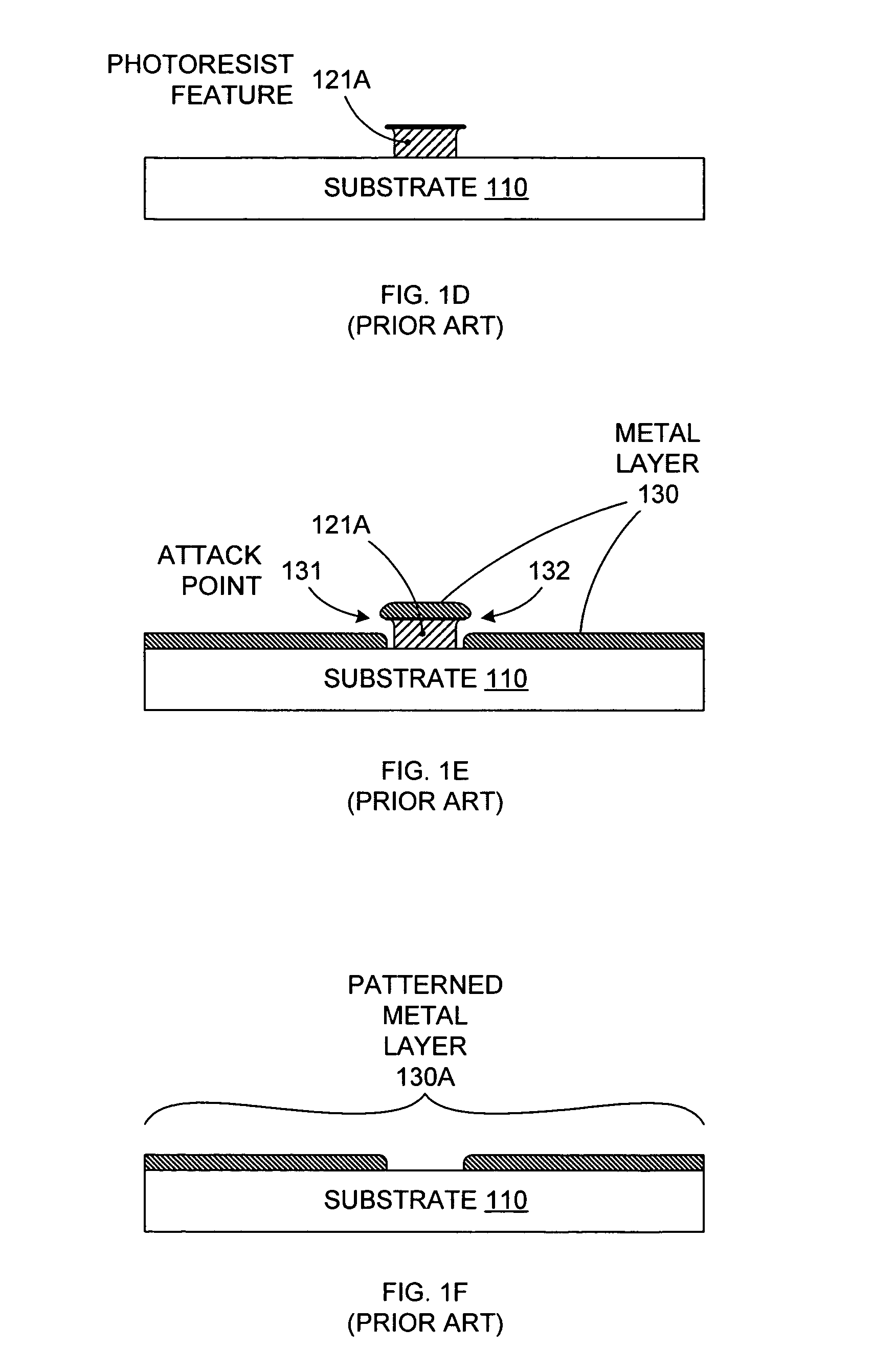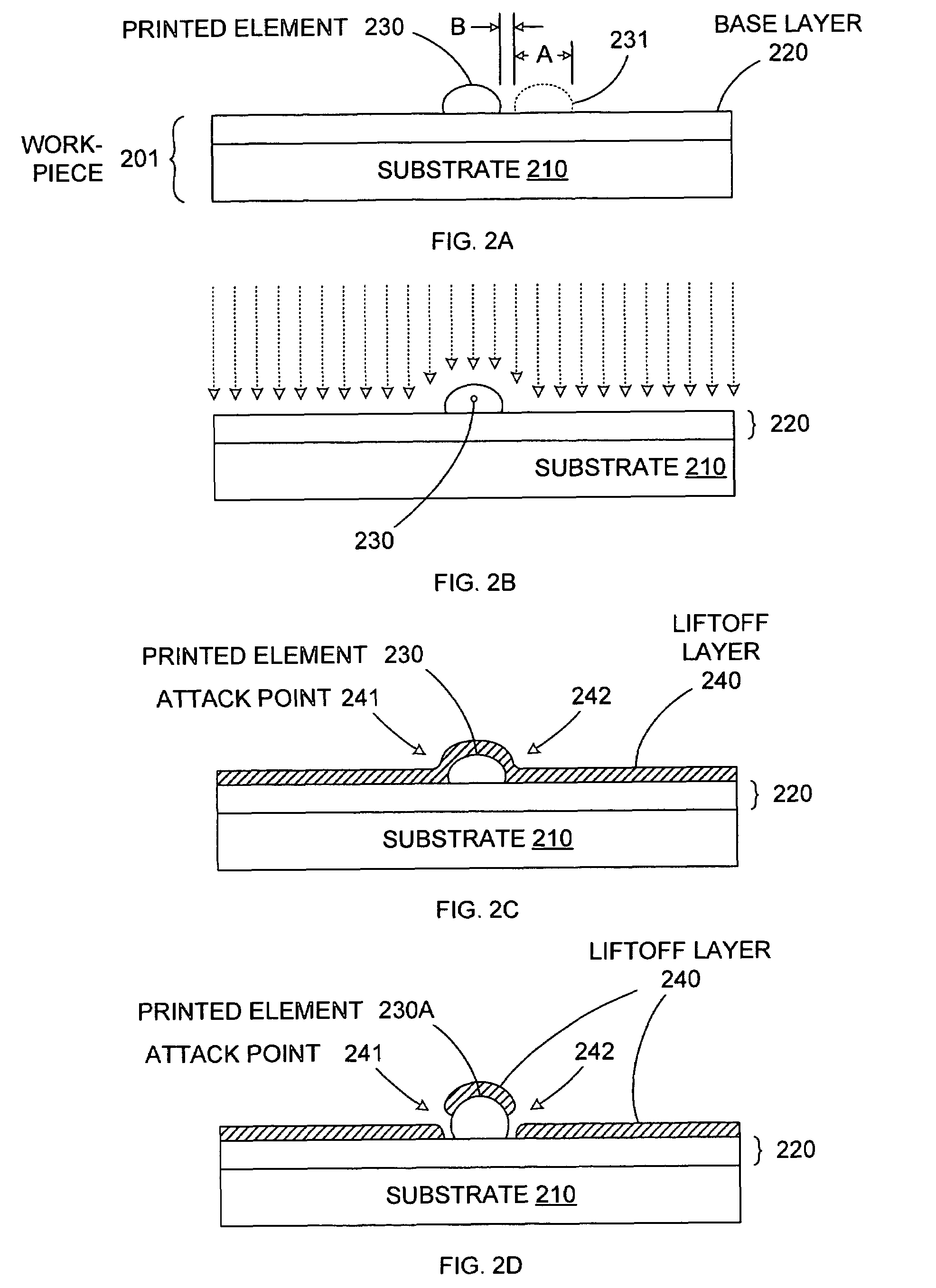Patterning using wax printing and lift off
a technology of liftoff and wax printing, applied in the field of patterning process, can solve the problems of increasing the size and complexity of tft arrays, the need for large display areas, and the inability to manufacture these devices using conventional semiconductor processes, so as to reduce the cost of production, simplify the alignment of liftoff patterns, and improve the effect of accuracy
- Summary
- Abstract
- Description
- Claims
- Application Information
AI Technical Summary
Benefits of technology
Problems solved by technology
Method used
Image
Examples
Embodiment Construction
[0033]Printing of integrated circuit (IC) patterns is an emerging technology that attempts to reduce the costs associated with IC production by printing an IC pattern directly on a substrate rather than creating the pattern using the delicate and time-consuming photolithography processes used in conventional IC manufacturing. As described in co-owned, co-pending U.S. patent application Ser. No. [XC-030], the printed IC pattern typically comprises actual IC features (i.e., elements that will be incorporated into the final IC, such as the gates and source and drain regions of thin film transistors, signal lines, opto-electronic device components, etc.) or a mask for subsequent semiconductor processing (e.g., etch, implant, etc.).
[0034]The invention adapts pattern printing to create a liftoff pattern for use in a liftoff process, thereby providing an alternative to the costly and sensitive photolithography operations used in conventional liftoff processes. According to various embodime...
PUM
| Property | Measurement | Unit |
|---|---|---|
| structurally homogenous | aaaaa | aaaaa |
| angle of rotation | aaaaa | aaaaa |
| angle | aaaaa | aaaaa |
Abstract
Description
Claims
Application Information
 Login to View More
Login to View More - R&D
- Intellectual Property
- Life Sciences
- Materials
- Tech Scout
- Unparalleled Data Quality
- Higher Quality Content
- 60% Fewer Hallucinations
Browse by: Latest US Patents, China's latest patents, Technical Efficacy Thesaurus, Application Domain, Technology Topic, Popular Technical Reports.
© 2025 PatSnap. All rights reserved.Legal|Privacy policy|Modern Slavery Act Transparency Statement|Sitemap|About US| Contact US: help@patsnap.com



